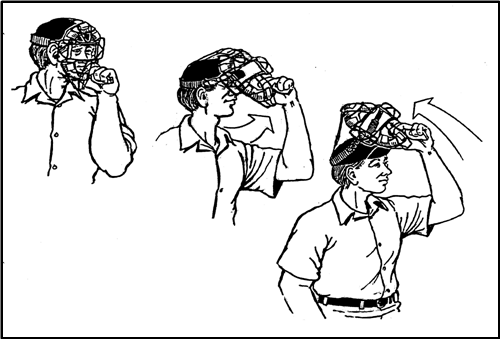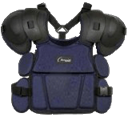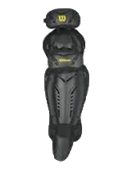|
The Indicator
The main function of the indicator is to record balls and strikes. A plate umpire should always have an indicator. It is  recommended that at least one base umpire also use an indicator just in case they need to assist the plate umpire. recommended that at least one base umpire also use an indicator just in case they need to assist the plate umpire.
Place the indicator in the palm of your left hand and hold it with the ring finger and the pinkie finger. Always use the indicator in your left hand as this frees the right hand for calling strikes. It is very difficult to change the indicator with the right hand and there is always the risk of throwing it away while calling pitches.
Avoid looking down at your indicator. Keep your eyes on the ball and avoid missing a pick-off or quick-pitch. Practice with your indicator until you can glance at it and be able to reset it by feel. If you need to look at it while the ball is live, don’t look down, hold it up at eye level and glance at it while you’re still watching the field.
The indicator takes some practice but it becomes second nature for experienced umpires.
Mask
 The mask should be adjusted so that it is loose enough to fall away slightly from your chin when you are in the proper slot stance. A mask that is too tight will transfer any shock from a foul ball as opposed to absorbing or deflecting the force. When wearing a traditional wire frame mask, the hat should always be worn with the bill facing forward. Once your mask and harness are properly adjusted, it is recommended that any unnecessary straps be cut close to the adjusting mechanism. Nylon harness straps should be singed with a match or lighter to prevent fraying. Elastic straps can be wrapped with black electrical tape. The mask should be adjusted so that it is loose enough to fall away slightly from your chin when you are in the proper slot stance. A mask that is too tight will transfer any shock from a foul ball as opposed to absorbing or deflecting the force. When wearing a traditional wire frame mask, the hat should always be worn with the bill facing forward. Once your mask and harness are properly adjusted, it is recommended that any unnecessary straps be cut close to the adjusting mechanism. Nylon harness straps should be singed with a match or lighter to prevent fraying. Elastic straps can be wrapped with black electrical tape.
As the mask is removed often to provide the best possible view of all action, umpires need to learn the proper way for removal. The left hand is used in removing the mask – shift the indicator so the thumb is free. Grasp the mask so that the thumb is at the side of or under the jaw and the index and middle finger are gripping the frame. Remove the mask by lifting straight out first, then straight up, clearing the brim of the cap. By using this method, you can be sure that your cap will remain on your head. By keeping the mask in your left hand you will avoid the danger of hitting a player with it or throwing it while calling a runner out.
Chest Protector
Unless you are using the old-fashioned balloon chest protector, the modern chest protectors should always be worn inside the shirt. The harness should securely hold the protector to your chest, but still allow for enough movement so that when you are in the “B position” waiting for the pitch, the top of the protector adequately protects your clavicle.
Shin Guards
The shin guards should always be worn underneath the pant legs. Even without special umpire plate pants, you should be able to wear your shin guards underneath any pair of pants. Always wear your shin guards so that the hooks and loops of the straps are on the outside of your leg. It is also recommended that the loose ends of all straps be oriented in such a way so that the ends are underneath the actual strap and not on the outside of the strap. Strap ends can also be sewn to prevent them from coming loose.
Dressing for Protection and Safety
Dressing for protection and safety should be a high concern. This not only protects you as an official, but also sets a proper example for the leagues and other umpires. An umpire who cannot equip themselves to an adequate level of protection for a game should simply not work that game. Listed below is some of that necessary safety gear, as well as a few other suggested supplies.
- Mask
- Chest Protector
- Shin Guards (bring along extra straps)
- Brush
- Indicator
- Timer
- Fitted Base or Plate Cap
- Protective Cup
- Equipment Bag
- Ball Bag
- Plate and Base Umpire Shoes (Extra shoe laces)
- Slacks/Pants
- Umpiring Shirts (one sized to accommodate your chest protector) with fold-down collar, left chest pocket
- Small First-Aid Kit
- Sun Block
- Bug Spray
- Gloves (sometimes it gets cold)
- Tape Measure (coaches love to question distance)
|